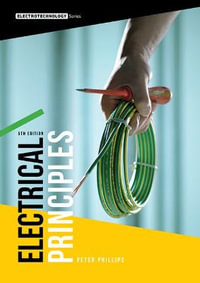| Introduction | |
| Overview | p. 1-1 |
| Introduction to Electronic Design Automation for Integrated Circuits | p. 1-2 |
| System Level Design | p. 1-6 |
| Micro-Architecture Design | p. 1-8 |
| Logical Verification | p. 1-8 |
| Test | p. 1-9 |
| RTL to GDS-II, or Synthesis, Place, and Route | p. 1-9 |
| Analog and Mixed-Signal Design | p. 1-11 |
| Physical Verification | p. 1-11 |
| Technology Computer-Aided Design | p. 1-12 |
| The Integrated Circuit Design Process and Electronic Design Automation | p. 2-1 |
| Introduction | p. 2-1 |
| Verification | p. 2-3 |
| Implementation | p. 2-5 |
| Design for Manufacturing | p. 2-11 |
| System Level Design | |
| Tools and Methodologies for System-Level Design | p. 3-1 |
| Introduction | p. 3-1 |
| Characteristics of Video Applications | p. 3-2 |
| Other Application Domains | p. 3-3 |
| Platform Characteristics | p. 3-3 |
| Models of Computation and Tools for Model-Based Design | p. 3-6 |
| Simulation | p. 3-13 |
| Hardware/Software Cosynthesis | p. 3-14 |
| Summary | p. 3-15 |
| System-Level Specification and Modeling Languages | p. 4-1 |
| Introduction | p. 4-1 |
| A Survey of Domain-Specific Languages and Methods | p. 4-2 |
| Heterogeneous Platforms and Methodologies | p. 4-12 |
| Conclusions | p. 4-13 |
| SoC Block-Based Design and IP Assembly | p. 5-1 |
| The Economics of Reusable IP and Block-Based Design | p. 5-2 |
| Standard Bus Interfaces | p. 5-3 |
| Use of Assertion-Based Verification | p. 5-4 |
| Use of IP Configurators and Generators | p. 5-5 |
| The Design Assembly and Verification Challenge | p. 5-7 |
| The SPIRIT XML Databook Initiative | p. 5-8 |
| Conclusions | p. 5-10 |
| Performance Evaluation Methods for Multiprocessor System-on-Chip Design | p. 6-1 |
| Introduction | p. 6-1 |
| Overview of Performance Evaluation in the Context of System Design Flow | p. 6-2 |
| MPSoC Performance Evaluation | p. 6-9 |
| Conclusion | p. 6-12 |
| System-Level Power Management | p. 7-1 |
| Introduction | p. 7-1 |
| Dynamic Power Management | p. 7-2 |
| Battery-Aware Dynamic Power Management | p. 7-10 |
| Software-Level Dynamic Power Management | p. 7-13 |
| Conclusions | p. 7-17 |
| Processor Modeling and Design Tools | p. 8-1 |
| Introduction | p. 8-1 |
| Processor Modeling Using ADLs | p. 8-2 |
| ADL-Driven Methodologies | p. 8-11 |
| Conclusions | p. 8-18 |
| Embedded Software Modeling and Design | p. 9-1 |
| Introduction | p. 9-1 |
| Synchronous vs. Asynchronous Models | p. 9-13 |
| Synchronous Models | p. 9-13 |
| Asynchronous Models | p. 9-16 |
| Research on Models for Embedded Software | p. 9-34 |
| Conclusions | p. 9-40 |
| Using Performance Metrics to Select Microprocessor Cores for IC Designs | p. 10-1 |
| Introduction | p. 10-1 |
| The ISS as Benchmarking Platform | p. 10-3 |
| Ideal Versus Practical Processor Benchmarks | p. 10-4 |
| Standard Benchmark Types | p. 10-4 |
| Prehistoric Performance Ratings: MIPS, MOPS, and MFLOPS | p. 10-5 |
| Classic Processor Benchmarks (The Stone Age) | p. 10-6 |
| Modern Processor Performance Benchmarks | p. 10-13 |
| Configurable Processors and the Future of Processor-Core Benchmarks | p. 10-22 |
| Conclusion | p. 10-25 |
| Parallelizing High-Level Synthesis: A Code Transformational Approach to High-Level Synthesis | p. 11-1 |
| Introduction | p. 11-2 |
| Background and Survey of the State of the Art | p. 11-3 |
| Parallelizing HLS | p. 11-11 |
| The SPARK PHLS Framework | p. 11-15 |
| Summary | p. 11-16 |
| Micro-Architecture Design | |
| Cycle-Accurate System-Level Modeling and Performance Evaluation | p. 12-1 |
| Introduction | p. 12-1 |
| System Modeling and Design Methodology | p. 12-3 |
| Back-Annotation of System-Level Modeling Objects | p. 12-6 |
| Automatic Extraction of Statistical Features | p. 12-10 |
| Open System-Level Modeling Issues | p. 12-16 |
| Micro-Architectural Power Estimation and Optimization | p. 13-1 |
| Introduction | p. 13-1 |
| Background | p. 13-2 |
| Architectural Template | p. 13-4 |
| Micro-Architectural Power Modeling and Estimation | p. 13-5 |
| Micro-Architectural Power Optimization | p. 13-14 |
| Conclusions | p. 13-29 |
| Design Planning | p. 14-1 |
| Introduction | p. 14-1 |
| Floorplans | p. 14-3 |
| Wireplans | p. 14-9 |
| A Formal System For Trade-Offs | p. 14-17 |
| Logical Verification | |
| Design and Verification Languages | p. 15-1 |
| Introduction | p. 15-1 |
| History | p. 15-2 |
| Design Languages | p. 15-3 |
| Verification Languages | p. 15-16 |
| Conclusions | p. 15-26 |
| Digital Simulation | p. 16-1 |
| Introduction | p. 16-1 |
| Event- vs. Process-Oriented Simulation | p. 16-3 |
| Logic Simulation Methods and Algorithms | p. 16-3 |
| Impact of Languages on Logic Simulation | p. 16-11 |
| Logic Simulation Techniques | p. 16-13 |
| Impact of HVLs on Simulation | p. 16-16 |
| Summary | p. 16-16 |
| Using Transactional-Level Models in an SoC Design Flow | p. 17-1 |
| Introduction | p. 17-1 |
| Related Work | p. 17-2 |
| Overview of the System-to-RTL Design Flow | p. 17-4 |
| TLM - A Complementary View for the Design Flow | p. 17-6 |
| TLM Modeling Application Programming Interface | p. 17-11 |
| Example of a Multimedia Platform | p. 17-13 |
| Design Flow Automation | p. 17-15 |
| Conclusion | p. 17-17 |
| Assertion-Based Verification | p. 18-1 |
| Introduction | p. 18-1 |
| History | p. 18-2 |
| State of the Art | p. 18-8 |
| Hardware Acceleration and Emulation | p. 19-1 |
| Introduction | p. 19-1 |
| Emulator Architecture Overview | p. 19-4 |
| Design Modeling | p. 19-9 |
| Debugging | p. 19-14 |
| Use Models | p. 19-15 |
| The Value of In-Circuit Emulation | p. 19-17 |
| Considerations for Successful Emulation | p. 19-17 |
| Summary | p. 19-20 |
| Formal Property Verification | p. 20-1 |
| Introduction | p. 20-1 |
| Formal Property Verification Methods and Technologies | p. 20-4 |
| Software Formal Verification | p. 20-8 |
| Summary | p. 20-11 |
| Test | |
| Design-For-Test | p. 21-1 |
| Introduction | p. 21-1 |
| The Objectives of Design-For-Test for Microelectronics Products | p. 21-2 |
| Overview of Chip-Level Design-For-Test Techniques | p. 21-5 |
| Conclusion | p. 21-33 |
| Automatic Test Pattern Generation | p. 22-1 |
| Introduction | p. 22-1 |
| Combinational ATPG | p. 22-2 |
| Sequential ATPG | p. 22-7 |
| ATPG and SAT | p. 22-13 |
| Applications of ATPG | p. 22-20 |
| High-Level ATPG | p. 22-25 |
| Analog and Mixed Signal Test | p. 23-1 |
| Introduction | p. 23-1 |
| Analog Circuits and Analog Specifications | p. 23-2 |
| Testability Analysis | p. 23-4 |
| Fault Modeling and Test Specification | p. 23-5 |
| Catastrophic Fault Modeling and Simulation | p. 23-6 |
| Parametric Faults, Worst-Case Tolerance Analysis, and Test Generation | p. 23-6 |
| Design for Test - An Overview | p. 23-7 |
| Analog Test Bus Standard | p. 23-7 |
| Oscillation-Based DFT/BIST | p. 23-8 |
| PLL, VCO, and Jitter Testing | p. 23-10 |
| Review of Jitter Measurement Techniques | p. 23-11 |
| Summary | p. 23-22 |
| Index | p. 1 |
| Table of Contents provided by Ingram. All Rights Reserved. |
























